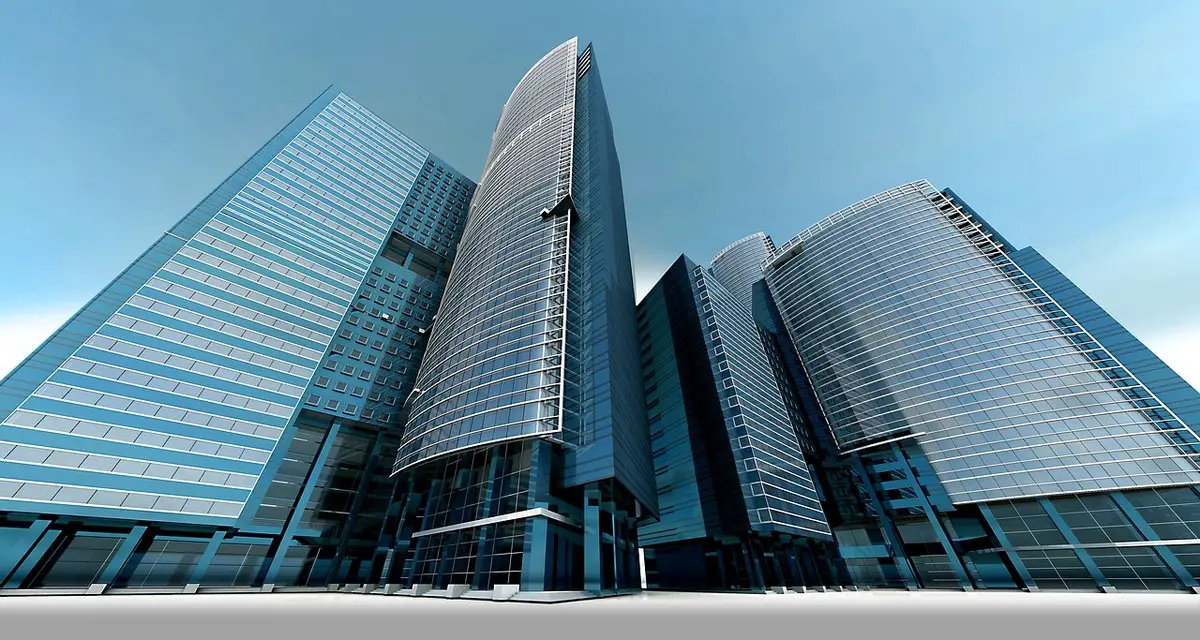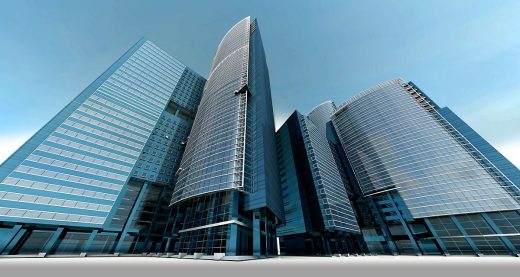Enhancing your designs, The impact of 3D architectural rendering in modern architecture, Virtual reality, Three dimensional render tips
Impact of 3D Architectural Rendering in Modern Architecture
22 April 2024
Enhancing Your Designs:
What is 3D architectural rendering, and why is it essential for modern architecture? This technique has become the backbone of presenting architectural concepts, allowing for intricate virtual simulations that offer a realistic preview of buildings long before construction. In our article, we uncover the sophisticated technology, processes, and real-world applications of 3D architectural rendering that are changing the face of design and construction.
Key Takeaways
- 3D architectural rendering has evolved from traditional hand-drawn sketches to advanced digital visualizations, enhancing the clarity, detail, and realism with which architects can showcase their designs.
- The key components of effective 3D rendering include detailed modeling based on original sketches or plans, strategic lighting and shadowing to evoke mood and highlight design features, and the use of textures and materials to bring renderings closer to photorealism.
- Applications of 3D rendering extend beyond design development to include collaborative efforts, marketing, sales, and immersive experiences through virtual reality, greatly impacting multiple industries such as real estate and entertainment.
The Evolution of Architectural Rendering
Architectural rendering has continuously transformed, adapting tools and techniques to reflect the aspirations of architects and the dreams of clients effectively. The craft began with the humble hand-drawn sketch, a tool for architects to convey the essence of their design ideas. However, as the demand for precision and the desire for more realistic depictions grew, the industry witnessed a paradigm shift towards digital means. This transition was not just about adopting new software; it was a fundamental change in how architectural concepts were communicated and realized.
Digital technology advancements ushered architectural rendering into an era of limitless potential of 3D visualization, replacing the constraints of pencil and paper. Rendering software has become an architect’s canvas, upon which proposed architectural designs are painted with pixels and brought to life with lighting and textures. These tools have redefined expectations, allowing architects to showcase their projects with unprecedented clarity and detail, offering glimpses into the future of building design.
Traditional Hand-Drawn Renderings
In the beginning, there were hand-drawn sketches before digital pixels became the norm. The earliest form of architectural rendering came to life through these detailed drawings, which offered a creative visualization of design concepts. More than mere visual descriptions, they amounted to an artistic discipline imbued with each illustrator’s distinct flair and creativity. Due to their interpretative nature, these traditional renderings did not always align precisely with the eventual outcome of structures — as depictions varied in terms of people present, surrounding environment, and project details.
Despite this variance from actuality, it might be seen as flaws by some. Others may find it adds character and variety to traditional renderings – such imperfections enrich its charm. Employing mixed media approaches that merge sketch artistry with collages or incorporate floor plans within illustrations delivers diverse insights into one portrayal—bridging abstract visionaries behind upcoming projects and concrete development endeavors currently undertaken by architects- providing them a playground for ideation where multiple designing pathways could be envisaged.
Architectural illustration has traversed centuries without losing its essence—a testament proven by how those foundational principles are embedded deeply within contemporary digital rendering techniques employed today in architecture fields across various projects handled by modern architects whose visions come forth via more recent forms of renderings reflecting times changed but rooted firmly in tradition.
Transition to Digital Rendering
The emergence of digital rendering has dramatically transformed the field of architectural design visualization. Software such as Blender brought forth a new era with its ability to generate 3D models, simulations, and animations that added depth and realism to previously flat conceptions. This evolution in technique has set a new benchmark for how architectural designs are visualized and presented. By harnessing these technologies, architects can now produce renderings that offer clients and stakeholders an accurate preview of what their project will look like even before construction begins.
By making sophisticated rendering processes widely available, digital tools have leveled the playing field for architects across practices of all sizes. The once labor-intensive and elite practice of creating detailed visuals is now more efficient and integral to the discipline at large. These advancements have not only raised the standard for presentation quality, but also improved dialogue among architects, their clientele, and other parties involved with a project—ultimately aligning everyone’s expectations around a cohesive vision encapsulated within the final design concept.
Advancements in 3D Rendering Technology
Each update in computer software and each technological advance brings 3D rendering one step closer to an indiscernible match with actual reality. The industry has adopted photorealism as its benchmark, using techniques that render a project’s completion in precise detail. Architectural renderings are now infused with high-resolution photos for aerial perspectives and external imagery, raising the bar for quality within the rendering process. This level of refinement transforms architectural visualizations from simple representations to comprehensive virtual experiences where every corner can be navigated and scrutinized.
The incorporation of virtual reality into the realm of architectural renderings marks a significant transformation. With VR360 and related technologies, interactive spaces are created where individuals can experience a sense of physical presence inside envisioned projects—this adds another layer to how space is conceptualized during visualization efforts. As computer software continues its progression, tools such as Twinmotion emerge to produce lifelike images that increasingly obscure the distinction between rendered visuals and actual photographs.
These advancements not only improve upon existing capabilities available to architects, but also revolutionize our engagement with designed environments — altering fundamentally how we perceive upcoming structures through enhanced interaction with these designs before they physically exist.
Key Components of 3D Architectural Rendering
The enchantment of 3D architectural rendering is its ability to breathe life into basic drafts, transforming them into immersive and dynamic three-dimensional representations. Central to this metamorphosis are vital elements that intertwine to deliver renderings with both visual allure and precise detail. The journey begins with the conversion of 2D blueprints or conceptual sketches into a foundational 3D model, setting the stage for an intricate digital manifestation of the intended architectural design. Crafting a rendering that truly connects with observers goes beyond mere shapes. It demands meticulous attention to various factors.
- Aesthetic style
- Interplay between light and shadow
- Selection of camera angles
- Texture and properties of materials utilized
- Integration of human figures for scale and vibrancy
These aspects synergize to weave a narrative, articulate the ambiance within space, stimulating an emotional connection from those who engage with it. Through shining spotlight on either magnificent architecture’s facade or exposing subtle nuances in interior environments, each contributing factor significantly affects how the rendered scene will be perceived by its audience. Combining technical sophistication available in modern rendering software along with architect’s creative insight allows us to translate these visions not just as static visuals but as captivating encounters poised for actualization.
Geometry and Modeling
In the realm of 3D architectural rendering, geometry is essential, acting as a digital parallel to an architect’s blueprint. This precise mathematical framework ensures that every angle and curve aligns faithfully with the intended design. Initially rooted in basic geometric forms during modeling, these shapes are then carefully manipulated and combined to mirror the intricate structures envisioned for the building. Such meticulous attention to dimension and scale is pivotal for achieving a final rendering that resonates with authenticity, mirroring its intended physical manifestation down to every detail.
The application of advanced geometric principles enables designers within this field to integrate exacting dimensions beyond elementary figures, permitting them to construct models embodying detailed features — from replicating material textures right through capturing how light interacts across varied surfaces. It requires not just technical prowess but also artistic acumen. Ensuring that while being structurally accurate, it must equally stimulate visual fascination.
Ultimately what emerges is a three-dimensional representation poised as an artist’s medium which can be vivified through subsequent applications of illumination effects and textural enhancements—transforming it into something more than mere virtual geometry.
Lighting and Shadows
Accurate lighting serves as the critical element that brings an architectural rendering to life, casting light upon the design’s strengths and bestowing a sense of depth and dimensionality on the space. The dynamic interplay between light and shadow is pivotal in shaping our perception of architectural forms, amplifying their three-dimensional appearance while underscoring the used textures and materials. Adding lens effects such as vignetting or depth of field can elevate a 3D rendering’s authenticity by guiding focus toward central elements, thereby infusing greater complexity into its visual narrative.
Judiciously applied lighting has the power to stir specific emotions within viewers, crafting atmospheres befitting each environment’s intended experience. It can bathe a snug corner in comforting warmth or throw sharp relief over modern architecture’s crisp edges—effectively turning an ordinary representation into an emotive medium. A well-executed play on shadows and illumination not only delivers clear insight into an architectural design, but also weaves a story about the place itself. It offers up an invitation for one to envision personal interactions within this anticipated setting.
Textures and Materials
The introduction of textures and materials is a pivotal step in transforming a proposed architectural design’s 3D rendering into what can be mistaken for an actual photograph. These characteristics imbue surfaces with distinction, such as the glossy appearance of glass, brickwork’s inherent rough texture, general surface weathering effects, stone’s distinct patterns, and the unique variations found within wood grains.
By incorporating these elements into the renderings, they attain a level of authenticity that profoundly engages observers by mirroring real-life imperfections. This lends to them being perceived as genuine rather than simulated images.
Architects who utilize platforms like Revit employ libraries boasting vast material selections — take Enscape’s offering over 1,900 options — to infuse their architectural designs with extraordinary detail. Through this careful process where lighting interactions are painstakingly recreated to accurately portray how it would illuminate various materials in reality. Architects produce three-dimensional representations so intricate they seem tangible. The resulting imagery allows one almost to experience the space sensorially—feeling warmth from sunlight on stonework or perceiving marble’s cool touch.
Summary
As our journey through the realm of 3D architectural rendering draws to a close, we recognize its vital role for architects, designers, and marketers. Transitioning from simple hand-drawn illustrations to sophisticated digital methods, architectural rendering has become an essential element in the realms of design and construction. By skillfully blending geometry’s intricacies with nuanced lighting and material application, one can craft exquisite visual representations that embody a proposed space’s true character. These renderings transcend their function as mere structural blueprints. They facilitate teamwork, guide decisions, and propel marketing initiatives.
The scope of 3D architectural rendering stretches wide—improving upon design development stages, fostering engaging marketing approaches, and offering clients vivid previews of prospective environments. Armed with the guidance imparted hereabouts, you can elevate your own renderings — guaranteeing clear communication of project goals while mesmerizing your target audience. As technology strides forward without pause or boundary limitation, soon will unleash new prospects for creative visualization in showcasing architecture designs powerfully impacting both virtual vistas—their implications deeply felt within physical settings too inviting us all to cultivate every opportunity presented by these evolving tools: envision digitally constructed areas so compelling they resonate profoundly beyond screens into tangible experiences etching memorable impressions on our world.
Frequently Asked Questions
What is the role of geometric modeling in 3D architectural rendering?
Constructing the base structure with precise measurements and proportions is essential in 3D architectural rendering for creating accurate and realistic visualizations, as geometric modeling serves a vital function by ensuring that the renderings align perfectly with the original design.
How does lighting affect 3D architectural renderings?
In 3D architectural renderings, the utilization of lighting is vital because it enhances the design by adding depth and dimension. It also highlights certain aspects while establishing a particular mood or atmosphere within the rendering.
Can 3D renderings be used for marketing real estate properties?
Indeed, 3D renderings serve as an influential marketing instrument within the real estate sector. They provide developers with a visually enticing method to highlight their projects, thereby capturing the interest of potential buyers or investors.
What benefits do virtual reality technologies bring to architectural rendering?
Clients can delve into architectural designs interactively and with lifelike realism, thanks to virtual reality technologies that considerably augment the visualization and presentation of projects.
What should be considered when creating a 3D architectural rendering to ensure it aligns with the client’s vision?
Take into account the client’s objectives and requirements, utilize references of superior quality, focus on specifics such as materials and lighting, keep communication channels open for input, and explore various styles and methods to effectively narrate the story of the project.
Comments on this guide to Enhancing Your Designs: The Impact of 3D Architectural Rendering in Modern Architecture projects article are welcome
Renders
CGI and 3D Posts
Architectural Designs
London Architecture Designs – chronological list
London Architect – design practice listing on e-architect
Comments / photos for the Enhancing Your Designs: The Impact of 3D Architectural Rendering in Modern Architecture page welcome







